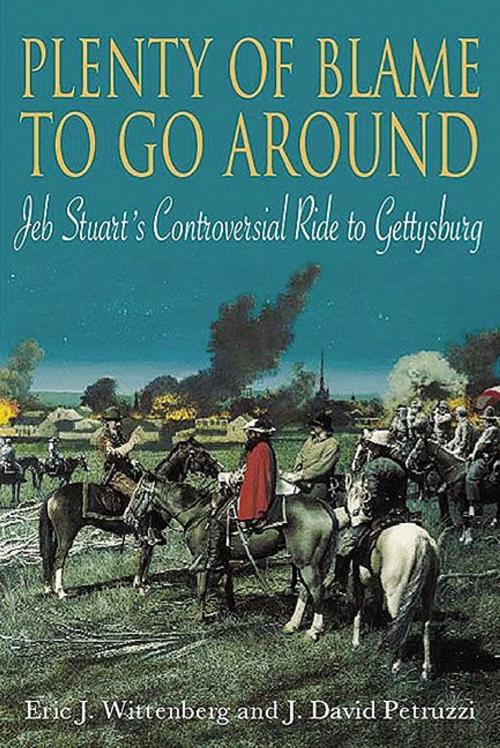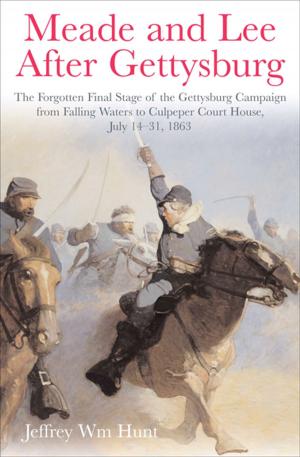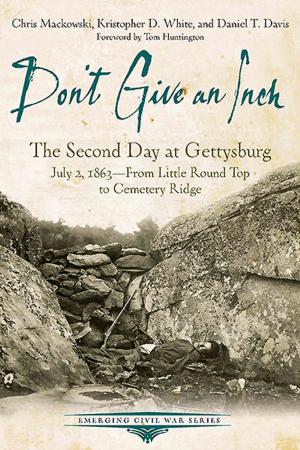Plenty Of Blame To Go Around Jeb Stuart's Controversial Ride To Gettysburg
Jeb Stuart's Controversial Ride to Gettysburg
Nonfiction, History, Americas, United States, Civil War Period (1850-1877)| Author: | Wittenberg Eric J. | ISBN: | 9781611210170 |
| Publisher: | Savas Beatie | Publication: | September 12, 2006 |
| Imprint: | Savas Beatie | Language: | English |
| Author: | Wittenberg Eric J. |
| ISBN: | 9781611210170 |
| Publisher: | Savas Beatie |
| Publication: | September 12, 2006 |
| Imprint: | Savas Beatie |
| Language: | English |
June 1863. The Gettysburg Campaign is in its opening hours. Harness jingles and hoofs pound as Confederate cavalryman James Ewell Brown (JEB) Stuart leads his three brigades of veteran troopers on a ride that triggers one of the Civil War's most bitter and enduring controversies. Instead of finding glory and victory two objectives with which he was intimately familiar Stuart reaped stinging criticism and substantial blame for one of the Confederacy's most stunning and unexpected battlefield defeats. In Plenty of Blame to Go Around: Jeb Stuart's Controversial Ride to Gettysburg Eric J. Wittenberg and J. David Petruzzi objectively investigate the role Stuart's horsemen played in the disastrous campaign. It is the first book ever written on this important and endlessly fascinating subject. Stuart left Virginia under acting on General Robert E. Lee's discretionary orders to advance into Maryland and Pennsylvania where he was to screen Lt. Gen. Richard Ewell's marching infantry corps and report on enemy activity. The mission jumped off its tracks from virtually the moment it began when one unexpected event after another unfolded across Stuart's path. For days neither Lee nor Stuart had any idea where the other was and the enemy blocked the horseman's direct route back to the Confederate army which was advancing nearly blind north into Pennsylvania. By the time Stuart reached Lee on the afternoon of July 2 the armies had unexpectedly collided at Gettysburg the second day's fighting was underway and one of the campaign's greatest controversies was born. Did the plumed cavalier disobey Lee's orders by stripping the army of its "eyes and ears?" Was Stuart to blame for the unexpected combat the broke out at Gettysburg on July 1? Authors Wittenberg and Petruzzi widely recognized for their study and expertise of Civil War cavalry operations have drawn upon a massive array of primary sources many heretofore untapped to fully explore Stuart's ride its consequences and the intense debate among participants shortly after the battle through early post-war commentators and among modern scholars.
June 1863. The Gettysburg Campaign is in its opening hours. Harness jingles and hoofs pound as Confederate cavalryman James Ewell Brown (JEB) Stuart leads his three brigades of veteran troopers on a ride that triggers one of the Civil War's most bitter and enduring controversies. Instead of finding glory and victory two objectives with which he was intimately familiar Stuart reaped stinging criticism and substantial blame for one of the Confederacy's most stunning and unexpected battlefield defeats. In Plenty of Blame to Go Around: Jeb Stuart's Controversial Ride to Gettysburg Eric J. Wittenberg and J. David Petruzzi objectively investigate the role Stuart's horsemen played in the disastrous campaign. It is the first book ever written on this important and endlessly fascinating subject. Stuart left Virginia under acting on General Robert E. Lee's discretionary orders to advance into Maryland and Pennsylvania where he was to screen Lt. Gen. Richard Ewell's marching infantry corps and report on enemy activity. The mission jumped off its tracks from virtually the moment it began when one unexpected event after another unfolded across Stuart's path. For days neither Lee nor Stuart had any idea where the other was and the enemy blocked the horseman's direct route back to the Confederate army which was advancing nearly blind north into Pennsylvania. By the time Stuart reached Lee on the afternoon of July 2 the armies had unexpectedly collided at Gettysburg the second day's fighting was underway and one of the campaign's greatest controversies was born. Did the plumed cavalier disobey Lee's orders by stripping the army of its "eyes and ears?" Was Stuart to blame for the unexpected combat the broke out at Gettysburg on July 1? Authors Wittenberg and Petruzzi widely recognized for their study and expertise of Civil War cavalry operations have drawn upon a massive array of primary sources many heretofore untapped to fully explore Stuart's ride its consequences and the intense debate among participants shortly after the battle through early post-war commentators and among modern scholars.















